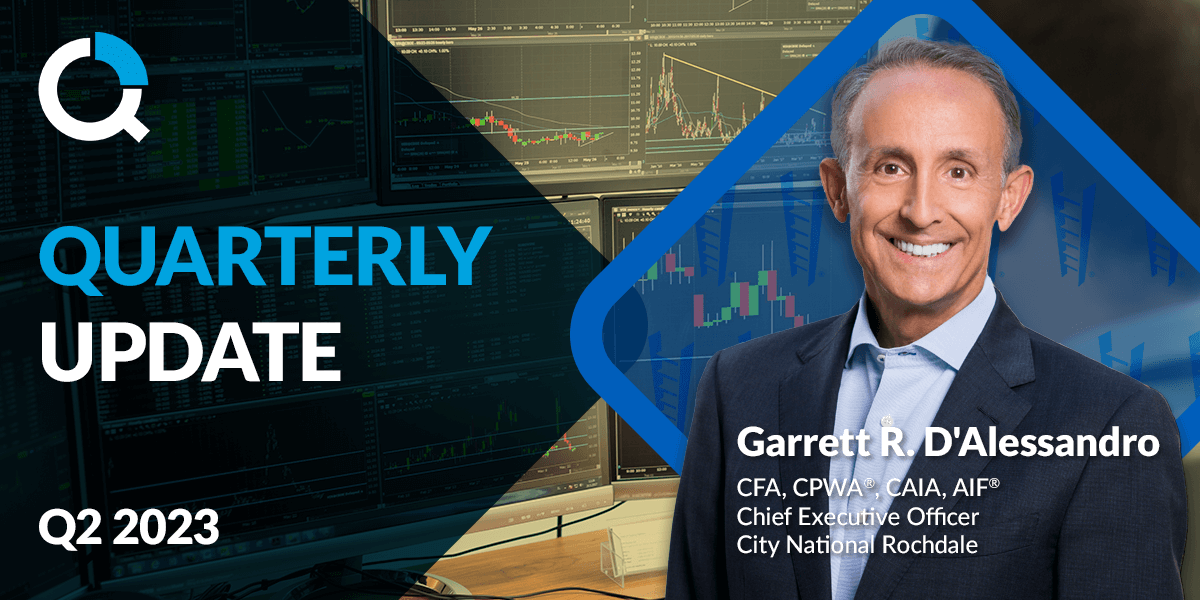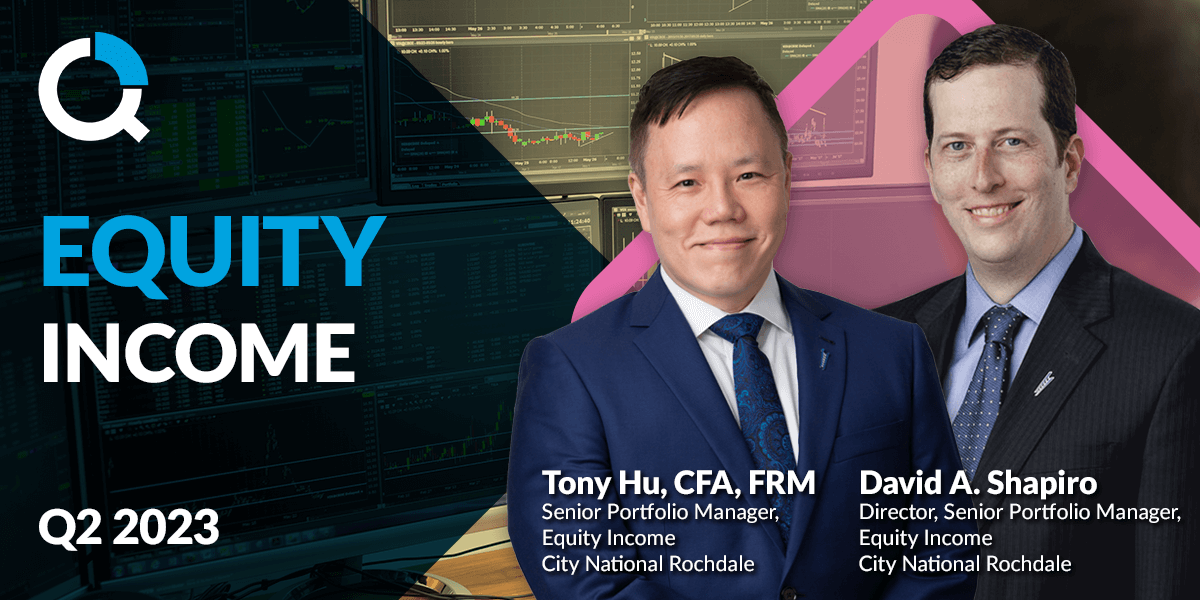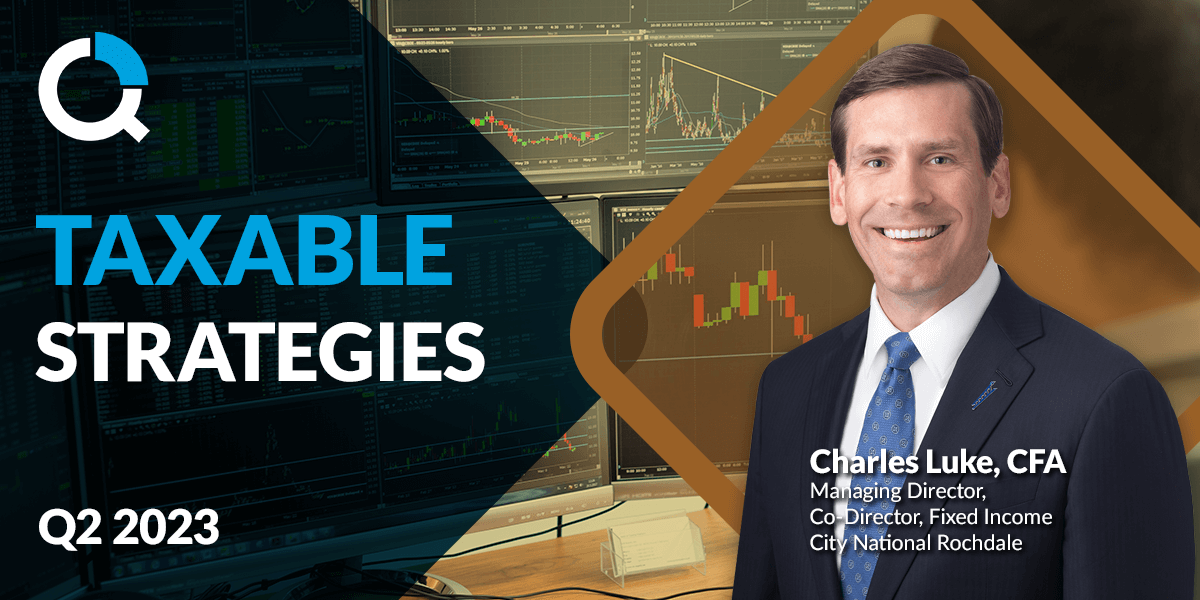
First Quarter Challenges to Municipals May Fade Away
Monetary policy and geopolitical developments driving sentiment
Market dislocation creates value opportunities for investors
Issuer credit quality remains durable
Market volatility left no stone unturned as broad asset class weakness led to lower prices and challenging performance during the first quarter. The Fed began its highly anticipated rate-tightening campaign to rein in accelerating inflation whilerising global risks contributed to the noticeable backup of yields across fixed-income markets.
As investors reassess the market trajectory, treasuries and municipals will likely ebb and flow in response to monetary and fiscal policy changes and expectations for the sustainability of the current economic expansion. Despite a difficult start to 2022, we see potential catalysts on the horizon for long term investors to engage the municipal market as nominal yields and bond valuations of investment-grade (IG) and high-yield municipals (HYM) advance to levels not seen since at least 2020.
IG and HYM bond yields increased more than 100 bps across the curve throughout 1Q2022, with credit spreads widening moderately amid the most significant cumulative market outflow activity since 2020. With added selling pressure from seasonal tax payments (i.e., tax-loss swaps), the market is confronting a price discovery period, offering investors an opportunity to upgrade credit quality and structure (e.g., coupon) while booking more attractive yields. Going forward, market volatility and liquidity challenges may very well create investment headwinds. However, if municipal pricing breaks away from the Treasury market as a more attractive technical environment takes hold, we could see an improved tone with perhaps extended outperformance. Additional downside risks could develop over the near term as the market digests Fed lift-off and geopolitical implications, particularly the Eastern Europe crisis.
Against this backdrop, the credit quality of IG and HYM bonds is benefiting from continued economic growth and more robust revenue performance vis-à-vis budgetary surpluses. State and local governments and municipal enterprises are further enjoying the availability of federal resources from the American Rescue Plan Act of 2021, among other stimulus programs. Rating activity skews positively while stress indicators remain low across most market sectors. We continue to monitor the impact of inflation on revenue risk and costs for issuers but expect financial positions to absorb the near term effects.
Important Disclosures
Important Information
Any opinions, projections, forecasts and forward-looking statements presented herein are valid as of the date of this document and are subject to change.
The information presented does not involve the rendering of personalized investment, financial, legal or tax advice. This presentation is not an offer to buy or sell, or a solicitation of any offer to buy or sell any of the securities mentioned herein.
Certain statements contained herein may constitute projections, forecasts and other forward-looking statements, which do not reflect actual results and are based primarily upon a hypothetical set of assumptions applied to certain historical financial information. Certain information has been provided by third-party sources and, although believed to be reliable, it has not been independently verified and its accuracy or completeness cannot be guaranteed.
Concentrating assets in a particular industry, sector of the economy, or markets may increase volatility because the investment will be more susceptible to the impact of market, economic, regulatory, and other factors affecting that industry or sector compared with a more broadly diversified asset allocation.
Private investments often engage in leveraging and other speculative investment practices that may increase the risk of investment loss, can be highly illiquid, are not required to provide periodic pricing or valuation information to investors, and may involve complex tax structures and delays in distributing important tax information.
Alternative investments are speculative, entail substantial risks, offer limited or no liquidity, and are not suitable for all investors. These investments have limited transparency to the funds’ investments and may involve leverage which magnifies both losses and gains, including the risk of loss of the entire investment. Alternative investments have varying and lengthy lockup provisions. Please see the Offering Memorandum for more complete information regarding the Fund’s investment objectives, risks, fees and other expenses.
Investments in below-investment-grade debt securities, which are usually called “high-yield” or “junk bonds,” are typically in weaker financial health and such securities can be harder to value and sell, and their prices can be more volatile than more highly rated securities. While these securities generally have higher rates of interest, they also involve greater risk of default than do securities of a higher-quality rating.
There are inherent risks with equity investing. These risks include, but are not limited to, stock market, manager or investment style. Stock markets tend to move in cycles, with periods of rising prices and periods of falling prices. Investing in international markets carries risks such as currency fluctuation, regulatory risks, and economic and political instability. Emerging markets involve heightened risks related to the same factors, as well as increased volatility, lower trading volume and less liquidity. Emerging markets can have greater custodial and operational risks and less developed legal and accounting systems than developed markets.
There are inherent risks with fixed-income investing. These risks may include interest rate, call, credit, market, inflation, government policy, liquidity or junk bond. When interest rates rise, bond prices fall. This risk is heightened with investments in longer-duration fixed-income securities and during periods when prevailing interest rates are low or negative. The yields and market values of municipal securities may be more affected by changes in tax rates and policies than similar income-bearing taxable securities. Certain investors’ incomes may be subject to the Federal Alternative Minimum Tax (AMT), and taxable gains are also possible. Investments in below-investment-grade debt securities, which are usually called “high yield” or “junk bonds,” are typically in weaker financial health and such securities can be harder to value and sell, and their prices can be more volatile than more highly rated securities. While these securities generally have higher rates of interest, they also involve greater risk of default than do securities of a higher-quality rating.
All investing is subject to risk, including the possible loss of the money you invest. As with any investment strategy, there is no guarantee that investment objectives will be met, and investors may lose money. Diversification does not ensure a profit or protect against a loss in a declining market. Past performance is no guarantee of future performance.
Indices are unmanaged, and one cannot invest directly in an index. Index returns do not reflect a deduction for fees or expenses.
Alternative investments are speculative, entail substantial risks, offer limited or no liquidity and are not suitable for all investors. These investments have limited transparency to the funds’ investments and may involve leverage which magnifies both losses and gains, including the risk of loss of the entire investment. Alternative investments have varying and lengthy lockup provisions.
This material is available to advisory and sub-advised clients, as well as financial professionals working with City National Rochdale, a registered investment advisor and a wholly-owned subsidiary of City National Bank. City National Bank provides investment management services through its sub-advisory relationship with City National Rochdale.
Index Definitions
S&P 500 Index: The S&P 500 Index, or Standard & Poor’s 500 Index, is a market-capitalization-weighted index of 500 leading publicly traded companies in the U.S. It is not an exact list of the top 500 U.S. companies by market cap because there are other criteria that the index includes.
CNR Proprietary Quality Ranking: City National Rochdale Proprietary Quality Ranking is the weighted average sum of securities held in the strategy versus the S&P 500 at the sector level using the below footnoted formula.
City National Rochdale Proprietary Quality Ranking formula: 40% Dupont Quality (return on equity adjusted by debt levels), 15% Earnings Stability (volatility of earnings), 15% Revenue Stability (volatility of revenue), 15% Cash Earnings Quality (cash flow vs. net income of company) 15% Balance Sheet Quality (fundamental strength of balance sheet). *Source: City National Rochdale proprietary ranking system utilizing MSCI and FactSet data. **Rank is a percentile ranking approach whereby 100 is the highest possible score and 1 is the lowest. The City National Rochdale Core compares the weighted average holdings of the strategy to the companies in the S&P 500 on a sector basis.
DuPont Quality: DuPont analysis is a framework for analyzing fundamental performance originally popularized by the DuPont Corporation, now widely used to compare the operational efficiency of two similar firms. DuPont analysis is a useful technique used to decompose the different drivers of return on equity (ROE).
Earnings Stability: Earnings stability is a measure of how consistently those earnings have been generated over time. Stable earnings growth typically occurs in industries where growth has a more predictable pattern.
Revenue Stability: Recurring revenue is the portion of a company’s revenue that is expected to continue in the future. Unlike one-off sales, these revenues are predictable, stable and can be counted on to occur at regular intervals going forward with a relatively high degree of certainty.
Cash Earnings Quality: Cash earnings are the residual profits after cash expenses are subtracted from cash revenues.
Balance Sheet Quality: A financial statement that reports a company’s assets, liabilities and shareholder's equity at a specific point in time, and provides a basis for computing rates of return and evaluating its capital structure.
Bloomberg Barclays US Aggregate Bond Index (LBUSTRUU): The Bloomberg Aggregate Bond Index or “the Agg” is a broad-based fixed-income index used by bond traders and the managers of mutual funds and exchange-traded funds (ETFs) as a benchmark to measure their relative performance.
GT2 Govt, GT3 Govt, GT5 Govt, GT10 Govt, GT30 Govt: US Government Treasury Yields
DXY Index: The U.S. dollar index (USDX) is a measure of the value of the U.S. dollar relative to the value of a basket of currencies of the majority of the U.S.’s most significant trading partners.
Dow Jones U.S. Select Dividend Index (DJDVP): The Dow Jones U.S. Select Dividend Index looks to target 100 dividend paying stocks screened for factors that include the dividend growth rate, the dividend payout ratio and the trading volume. The components are then weighted by the dividend yield.
P/E Ratio: The price-to-earnings ratio (P/E ratio) is the ratio for valuing a company that measures its current share price relative to its earnings per share (EPS).
The Commodity Research Bureau (CRB) Index acts as a representative indicator of today’s global commodity markets. It measures the aggregated price direction of various commodity sectors. The MSCI indexes are market cap-weighted indexes, which means stocks are weighted according to their market capitalization — calculated as stock price multiplied by the total number of shares outstanding.
Dividend Stock: A stock dividend is a dividend payment to shareholders that is made in shares instead of cash.
Quality Ranking: City National Rochdale Proprietary Quality Ranking is the weighted average sum of securities held in the strategy versus the S&P 500 at the sector level using the below footnoted formula.
City National Rochdale Proprietary Quality Ranking formula: 40% Dupont Quality (return on equity adjusted by debt levels), 15% Earnings Stability (v volatility of earnings), 15% Revenue Stability (volatility of revenue), 15% Cash Earnings Quality (cash flow vs. net income of company) 15% Balance Sheet Quality (fundamental strength of balance sheet).
*Source: City National Rochdale proprietary ranking system utilizing MSCI and FactSet data. **Rank is a percentile ranking approach whereby 100 is the highest possible score and 1 is the lowest. The Ci ty National Rochdale Core compares the weighted average holdings of the strategy to the companies in the S&P 500 on a sector basis. As of September 30, 2022.
Non-deposit investment Products are: • not FDIC insured • not Bank guaranteed • may lose value
Stay Informed.
Get our Insights delivered straight to your inbox.
More from the Quarterly Update
Put our insights to work for you.
If you have a client with more than $1 million in investable assets and want to find out about the benefits of our intelligently personalized portfolio management, speak with an investment consultant near you today.
If you’re a high-net-worth client who's interested in adding an experienced investment manager to your financial team, learn more about working with us here.





